Canadian Poplar: [Cultivation, Irrigation, Care, Pests and Diseases]
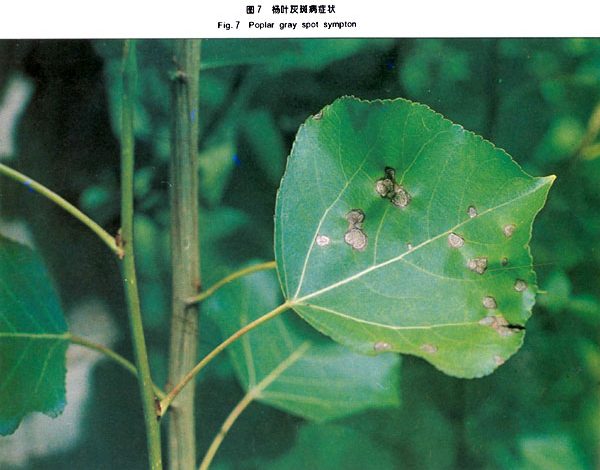
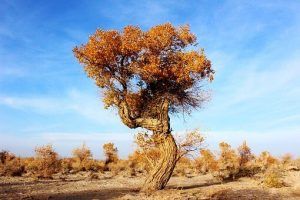 The Canadian poplar is a hybrid tree resulting from the cross between Populus deltoides, originally from North America, and Populus nigra, from the Eurasian region.
The Canadian poplar is a hybrid tree resulting from the cross between Populus deltoides, originally from North America, and Populus nigra, from the Eurasian region.
They are native to the cold and temperate regions of northern Europe, Africa, Asia and America. It has been introduced in very cold areas and in other warm and even semi-arid areas within the southern hemisphere region.
Its wood, being easy to work with and light, is used in the manufacture of construction materials, chipboard, paper pulp, furniture and even musical instruments. Likewise, the Canadian poplar is known for the production of salicin, the basis of aspirin, which is extracted from the bark.
The Canadian poplar was first described in 1785 by the German botanist Conrad Moench as a hybridization that arose after two species from different continents came into contact.
Important points when planting Canadian poplar:
- Scientific name: Populus x canadensis.
- Common name: Canadian poplar, Canadian black poplar, Canadian poplar.
- Height: 20 to 30 meters.
- Light requirement: Direct light.
- Temperature: Cold and temperate climates.
- Irrigation: Moderate and high.
- Fertilizer: Organic fertilizer.
What characteristics does the Canadian poplar have?
The so-called black poplar of Canada is a dioecious, deciduous tree with a broad, globe-shaped crown. It generally measures between 20 and 30 meters in height, but sometimes it reaches 35 meters.
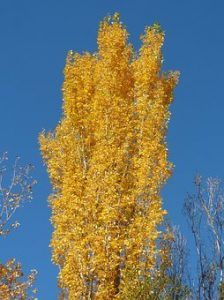 The trunk of this tree is solid, straight and somewhat sinuous at times. Its bark is shiny and smooth at first, but as it grows and matures, it cracks until it leaves very deep marks during its old age.
The trunk of this tree is solid, straight and somewhat sinuous at times. Its bark is shiny and smooth at first, but as it grows and matures, it cracks until it leaves very deep marks during its old age.
In turn, the branches are thin, flexible, and grow horizontally or inclined. From these sprout simple, alternate and deciduous leaves, of variable shapes even in the same specimen. They are green and shiny on both sides.
Being a dioecious tree, there are male and female flowers. The female flowers are grouped in catkins, or long, light green clusters. In the case of males, these are more densely packed and their color ranges from red to purple.
The fruit of the Canadian cottonwood is a capsule containing numerous black seeds. In turn, the seeds are small and have small tufts or fluff made up of tiny white cotton-like hairs.
When to sow the Canadian poplar?
Usually, the Canadian poplar is planted at the end of winter, outside the vegetative period, taking care to avoid damage and mortality of the specimens due to frost.
However, it is recommended to plant during the fall, in mid-November and December, but before the buds appear. This way the plant will have more time to develop and grow stronger during its first year.
Where to plant the Canadian poplar?
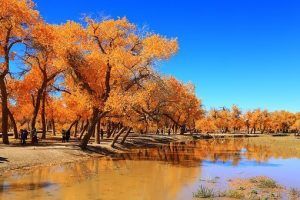 Poplars are trees that need sunlight and do not grow together with other species that compete with them or that cover them with their shade during the first phases of their growth.
Poplars are trees that need sunlight and do not grow together with other species that compete with them or that cover them with their shade during the first phases of their growth.
They must have at least 25m 2 free of telephone or electrical cables. Likewise, they require deep, aerated soils, never less than 1 meter.
The groundwater level should be between 1 to 1.50 meters deep during its vegetative season. Otherwise, consumption will have to be supplied through irrigation.
How to prepare the land?
The Canadian poplar tree grows best in soils with a low clay content, preferably soils with a sandy loam and silt loam texture. Sandy-clay and sandy-loam textures may also be acceptable.

In addition, soils with a neutral pH, between 6 and 8, with an easily decomposable organic matter content, rich in potassium and phosphorus, favor it. On the other hand, fertilization will only be necessary on land that is not very fertile and has an average capacity to retain water.

How do we water the Canadian poplar?
The poplars refer fresh waters and with a good amount of oxygen in them. Sometimes they do not need irrigation when they are grown in deep soils, or in regions with good rainfall rates.
The type of irrigation will depend on the availability of water, but in the case of growing a specimen, this can be done by manual means, mainly recommending irrigation with a hose.
How often do we water the Canadian poplar?
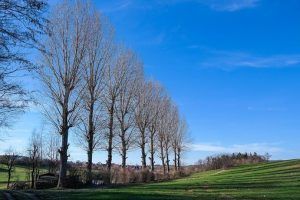 Irrigation for the Canadian poplar must be supplied in doses and frequencies appropriate to the soil, always taking care that they do not become waterlogged, since the roots could suffocate and die.
Irrigation for the Canadian poplar must be supplied in doses and frequencies appropriate to the soil, always taking care that they do not become waterlogged, since the roots could suffocate and die.
However, it can be watered once a week, or once every 15 days, with abundant flow. With these rates, irrigation can be adapted according to the case and the need.
How to plant a Canadian poplar step by step?
Canadian poplar is grown primarily from cuttings. The instructions for sowing it by this method are shared below.
- Obtain a cutting in vegetative rest, healthy, straight and without injuries. It should measure between 20 and 35 centimeters in length, be 2 centimeters thick and have at least 2 buds.
- Hydrate the cuttings in water for at least 40 hours.
- Apply an insecticide and fungicide solution to prevent disease.
- In the already prepared and moistened portion of the ground, dig a small hole and bury the cutting, letting it protrude from the ground by 2 or 4 centimeters, keeping 1 or 2 buds outside.
- Gently compact the area around the cutting and water until the substrate is moist.
What care does the Canadian poplar need?
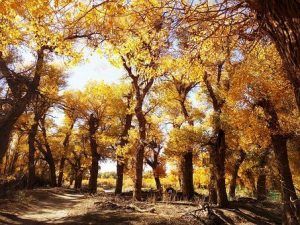 One of the main cares of the Canadian poplar is the control of weeds. They should be removed during soil preparation and throughout the plant ‘s first year of growth.
One of the main cares of the Canadian poplar is the control of weeds. They should be removed during soil preparation and throughout the plant ‘s first year of growth.
Generally the poplar does not need pruning unless it is one of formation. This is recommended in late winter or early spring, before the time of foliation.
What pests and diseases affect the Canadian poplar?
Among the most widespread diseases for the Canadian poplar species are those caused by defoliating fungi such as spring defoliation, marsonine and rusts.

In the case of pests, there are defoliating, sucking and boring insects. Some of them are the poplar borer caterpillar, the poplar borer beetle, the bud borer, among others.
How long does the Canadian poplar live?
The Canadian poplar is a short-lived tree that reaches, at most, 60 years of life.
How long does it take to grow Canadian poplar?
The average time it takes to become an adult specimen is 15 years. It grows slowly.
How long does it take to produce fruit?
It can take an average of 5 years to produce its first flowers and fruit, but don’t be alarmed if it takes a little longer.
Can it be grown in a pot?
Yes, it can be grown in a pot, although that will influence the final size it will have.
How many times does the Canadian poplar produce fruit?
It blooms once a year, although if the conditions are optimal it could reach 2. That means that the same number of times it will bear fruit.
Should the Canadian poplar be pollinated to obtain fruit?
Pollination is easily done through the action of the wind.
How cold can Canadian cottonwood tolerate?
It has no problems with cold and occasional frosts. In general, it is better to keep it above -8° C.
How many Canadian poplars can be planted per hectare?
An average of 300 trees is estimated to be planted on one hectare of land.
What type of fertilizer does the Canadian poplar need?
Organic fertilizer must be applied once a year to provide the necessary nutrients.
If the tree is in a pot, use liquid fertilizers.
How much heat and/or drought can Canadian cottonwood tolerate?
It is not a good idea to have it in an area with intense heat that exceeds 32 ° C.
On the other hand, it does present good resistance to drought.
References
- https://www.biodiversidad.gob.mx/Difusion/cienciaCiudadana/aurbanos/ficha.php?item=Populus%20deltoides
- http://alcoy.san.gva.es/alercoy/fichas/Populus/Chopo-Populus.pdf
- http://www.inia.es/gcontrec/pub/Manual_de_cultivos_de_Populus_spp__(baja_resolucion-interiores)_1281085926750.pdf
- https://elarbol.org/populus-x-canadensis/
- https://www.mapa.gob.es/ministerio/pags/biblioteca/hojas/hd_1961_11.pdf
- http://www.populuscyl.es/contenido/cultivo-chopos-en-castilla-leon
- https://en.wikipedia.org/wiki/Populus_x_canadensis

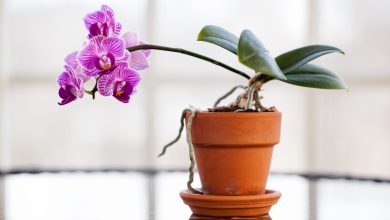
![Photo of Climbing Flowers: [List, Examples, Characteristics]](https://www.complete-gardening.com/wp-content/uploads/2022/08/climbing-flowers-list-examples-characteristics-390x220.jpg)
![Photo of Plant Potatoes: The Complete Guide to do it [Step by Step]](https://www.complete-gardening.com/wp-content/uploads/2022/08/plant-potatoes-the-complete-guide-to-do-it-step-by-step-390x220.jpg)
